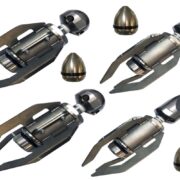A drill is a hole-making tool or equipment having a spinning cutting tip, reciprocating hammer, or chisel. With so many alternative drill types available on cordlessdrillhub.com, each with its own set of models, selecting one for a specific job can be a difficult challenge. Drills differ significantly in terms of speed, power, torque, and size. Their functioning mechanism, as well as the types of chuck and drill bits that they accept, have an impact on their utility. Here are some types of drills:
Table of Contents
Drill driver:
Drill drivers are a very flexible sort of power tool that may be used for a wide range of activities. Drilling holes and inserting screws into hard surfaces like wood and metal are examples of something like this. Typically, a drill driver is powered by a battery. Here you’ll find the highest-quality Driver Drills in Australia. A drill driver is made up of a chuck and a drill bit. As the chuck opens and closes around the spindle, the bit rotates both clockwise and counterclockwise.
Impact driver:
An impact driver is a tool that is used to loosen nuts and drive screws into hard surfaces. Unlike ordinary drills, an impact driver does not have forward chipping gear. It is instead made up of a revolving hammer and anvil mechanism.
Hammer drill:
A hammer drill is a versatile tool that combines the capabilities of two hand tools: a hammer and a drill. They use a series of brief yet forceful hammer thrusts to break through the material with far less effort than would be required otherwise.
Core drill:
Core drills are distinct from all other types of drills not only in terms of operation but also in terms of appearance, due to their elongated cylindrical assembly. It removes a well-cut cylinder from the surface of the material being drilled when it spins at a high speed.
Screwdriver drill:
A screwdriver drill is a motor-driven screwdriver that produces higher torque than a standard drill. A screwdriver drill can be used for every screw-driving task you may encounter in your home or garage.
Here are some basic uses of the drills:
Drilling:
Drilling is one of the primary functions of an impact driver.
Tightening-Loosening Screws:
An impact driver would be able to screw in a huge number of screws into dense and thick material with much greater efficiency and less time spent.
Tightening and removing bolts:
Bolts can be tightened and relaxed with impact drivers. A standard wrench or power wrench, like drilling and screwing, may not be able to tighten bolts satisfactorily in exceptionally thick, lengthy, or dense materials.
Mixing cement and concrete:
Special accessories for your impact driver are obtainable that enable you to completely mix small amounts of concrete and cement.
Sanding:
Another purpose for an impact driver is to sand down the wood. Special circular sanding bits for impact drivers are available and are suitable for minor sanding applications, especially detail work.
Mixing Paint:
An impact driver can also be used to mix paint, albeit this is a less usual application. You can do the same thing with your impact driver and these similar paint mixing attachments.













Comments